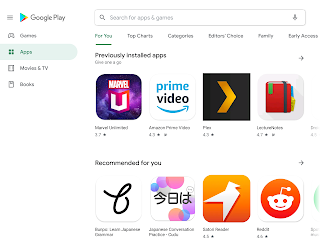Back in August, I rambled a bit about my thoughts on electronic books. Later on I acquired an Android tablet; about 4 x as much as a Kindle for the make/model tablet I purchased, but a hell of a lot more useful than a kindle or my netbook.
Since then, I have more or less established myself with getting books via Amazon. In fact, it’s the only setup I’ve been using these past few months. I like it and my only complaint is I find wish-list issues more useful from a real web browser. Since then the Cloud Reader has become widely available, so Linux/BSD issues are even pretty moot now. I like Amazon and use it for plenty but they may have just lost a customer.
Now Amazon rarely makes me angry, the worst they’ve ever done is hook me up with a seller that bungles tracking data, but hey, packages still got there and it was small stuff. So far as long as I don’t have to work for Amazon, it’s a good enough thing in my books. Up to now, if a competitor would offer a lower price: I would still buy the Kindle version, in order to keep consistency and not have to remember which app/platform I bought it from. It also sometimes pisses me off that books I want are not always available in a Kindle edition, but that makes me upset with publishers, not Amazon! The price difference of $58.28@Amazon versus $69.42@Google isn’t /THAT/ bad, seriously. Although I will admit I usually find Amazon has much better deals on books that _I_ want, I have never seen this issue with Kindle books before.
Real Time Rendering is available in a Kindle edition but, I can only view it using the PC/Mac clients or the iPad client. You cannot tell me that dinky ass XGA screen on the iPad can display books better than my 22″/1080hd monitor using the Cloud Reader client, or my Android tablet with hit’s 10.1″/720hd screen. OK, I can understand it might not look sexy on my phones 3.8″/WVGA screen but still, wtf? Total steaming pile of stupidity right there.
I want my content and I want it on all of my able bodied devices!
That discovery inspires me to jump ship and change my purchasing habits: to Google Play by way of Play Books. Once upon a time I thought about just going with whichever resource gave the best price, Amazon, B&N, or Google; Kobo I won’t trust with my $data after poking ’round there site. In practice though I found that having consisency like all my books either via Amazon, or physical books, was much more convienant than maybe saving $2 here or $5 there. Even for price differences between used real books and electronic books, because my shelf space is at a premium in the real world.
Looking at other books of interest, here’s a little break down:
`
| Title |
Amazon Kindle Price |
Google Play Price |
List Price @Amazon |
Amazon Availability |
Google Availability |
| Real-Time Rendering |
$58.28 |
$69.42 |
$89.00 |
PC, Mac, iPad |
Web, iOS, Android, eReader |
| OpenGL SuperBible: Comprehensive Tutorial and Reference |
$28.59 |
$37.67 |
$59.99 |
Kindle, iOS, Android, Blackberry, PC, Mac |
Web, iOS, Android, eReader |
| Essential Mathematics for Games and Interactive Applications, Second Edition: A Programmer’s Guide |
N/A |
$47.36 |
$59.95 |
N/A |
Web, iOS, Android, eReader |
| 3D Game Engine Design: A Practical Approach To Real-Time Computer Graphics |
N/A |
$66.36 |
$82.95 |
N/A |
Web, iOS, Android, eReader |
| Linux Kernel Development |
$17.69 |
$31.19 |
$39.99 |
PC* |
Web, iOS, Android, eReader |
| Understanding The Linux Kernel |
$29.79 |
$37.67 |
$59.99 |
PC* |
Web, iOS, Android, eReader |
eReader in the above table is defined as what is described
here. Amazon Availability is what’s listed on the web page, although I assume the OpenGL SuperBible would work with WP7 and the Cloud Reader clients too. Ones marked with a * say what is listed but e.g. can have a sample sent to my tablet, so I’d assume they work anywhere.
Loss of dedicated applications for Windows Phone and Blackberry don’t bother me, I don’t use either, and should have other means of accessing my content off these devices if I ever need to change. I’m also inclined to think that Google’s published policy on
removals beats the shit out of
Amazon’s track record. From the look of the help pages, Google also offers more natural syncing between devices, as long as you don’t have to resort to pushing files over Adobe/USB. So really the only gripe I can have is the when the price tag may be more drastic (like for LKD).
